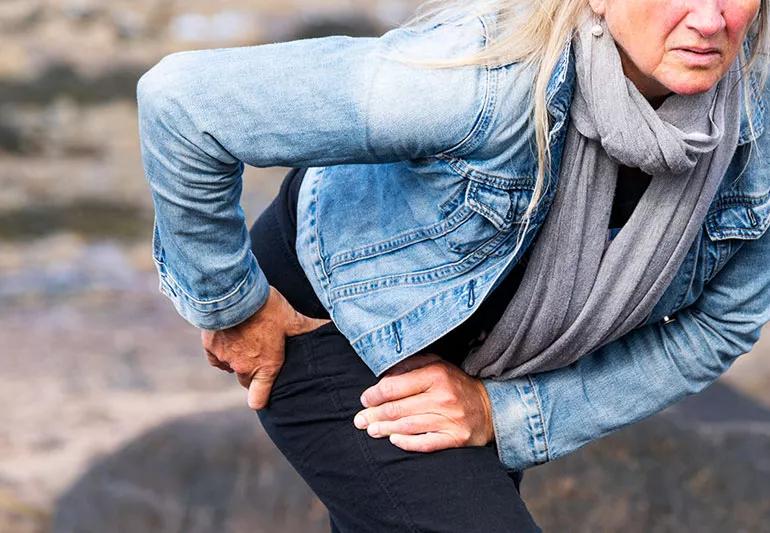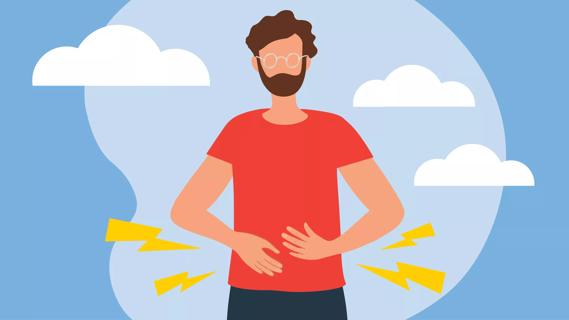Gardening, jogging, tennis or golf may trigger painful inflammation

Do you tend to bump the car door shut with your hip? If so, don’t be surprised if your bursa complains.
Advertisement
Cleveland Clinic is a non-profit academic medical center. Advertising on our site helps support our mission. We do not endorse non-Cleveland Clinic products or services. Policy
Bursae are small sacs of fluid cushioning your bones, tendons and muscles near joints. Acute injury, overuse or degenerative arthritis in your hip or back can lead to a common condition known as bursitis.
This painful inflammation of the bursa and surrounding tissue commonly targets your hip and its many bursae. Typically, the bursae cushioning the outward portion of your upper thigh bone are affected.
Odds are good that you do something that puts you at risk of developing bursitis. Gardening, raking, jogging, bicycling long distances, and playing tennis, golf or even a musical instrument can increase your odds of developing bursitis.
Middle-aged and elderly women are especially prone to it, too. Ditto for people with very physical jobs, such as carpenters and house painters.
The bottom line? “Trochanteric bursitis can affect anyone,” says rheumatologist Scott Burg, DO.
Trochanteric bursitis brings warmth, swelling and pain to your outer thigh that can spread down to your knee. Walking intensifies the pain, limping is common and climbing steps can become difficult. Tenderness on the side you’re lying on may interfere with sleep.
“But everyone’s response to pain is unique,” notes Dr. Burg. “Some people feel minimal discomfort that annoys them, while others sense pain more intensely. That’s why some people don’t need much anesthetic when a tooth is pulled, while others need a truckload.”
Advertisement
Home treatment with rest, ice and anti-inflammatories can help. It’s also important to avoid any activities that cause pain, including excessive standing.
Most trochanteric bursitis resolves on its own after two weeks. If home treatment hasn’t relieved your discomfort after two weeks, it’s time to see a doctor. A specialist in orthopaedics, rheumatology or physical medicine and rehabilitation can help.
Your doctor may ask you questions like:
Sometimes, your doctor may recommend physical therapy. If that doesn’t help, your provider may inject steroids into the bursa to relieve the inflammation.
“Injections can bring long-lasting and sometimes permanent relief,” says Dr. Burg. “But they won’t be effective if you keep doing the work or activity that caused your bursitis in the first place. You have to eliminate the source of the problem.”
In the rare cases where trochanteric bursitis persists after 12 months of medical therapy, surgery can be considered.
But chances are, with proper care, your bursa will stop complaining long before that.
Advertisement
Learn more about our editorial process.
Advertisement

Stretching and strengthening your hips can help improve flexibility and relieve pressure

At-home treatments and lifestyle changes may help ease the symptoms and improve the appearance of varicose veins — but they aren’t a cure

Stretches, exercises and posture changes can help address lower cross syndrome

Swimming, cycling and walking can help keep your hips strong and mobile

Relieve a tight, achy and aggravated IT band, as well as hip and knee pain, with these at-home exercises

Regular exercise, an iron-rich diet, adequate sleep and bedtime routines that include a warm bath or massage may help with your kid’s RLS

Depending on the type of hernia, complications like pain and infection may arise in the months and years following treatment

Your bone structure determines whether you have a visible dent between your hips and your thighs

Start having sex about 72 hours before ovulation, then at least every other day during your fertile window

Attachment theory suggests that your earliest relationships shape connections throughout your life

It isn’t a recognized mental health disorder, but research shows that problematic social media use can negatively affect your mental health, self-esteem and sleep